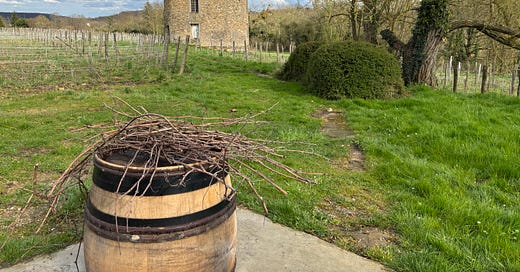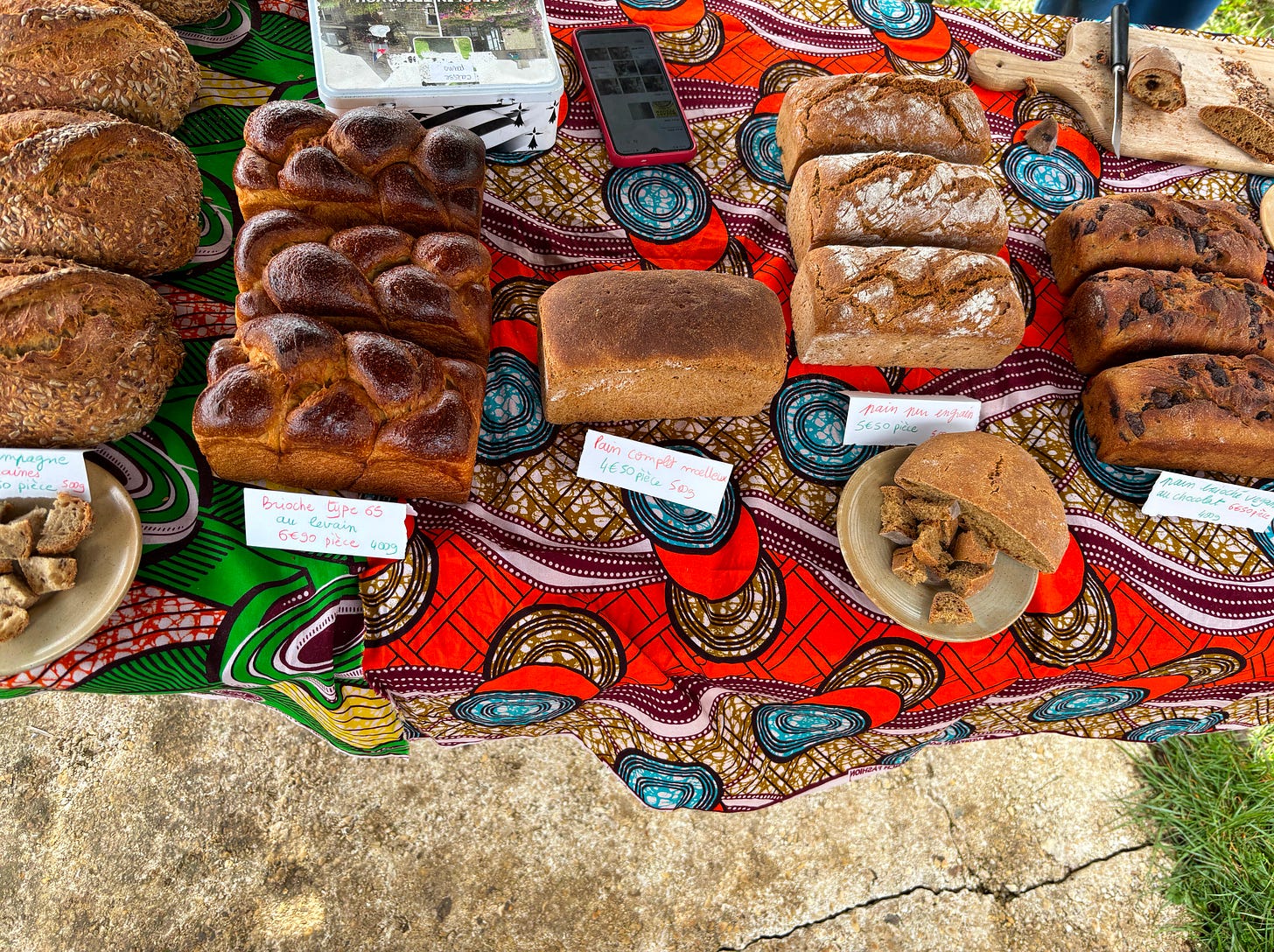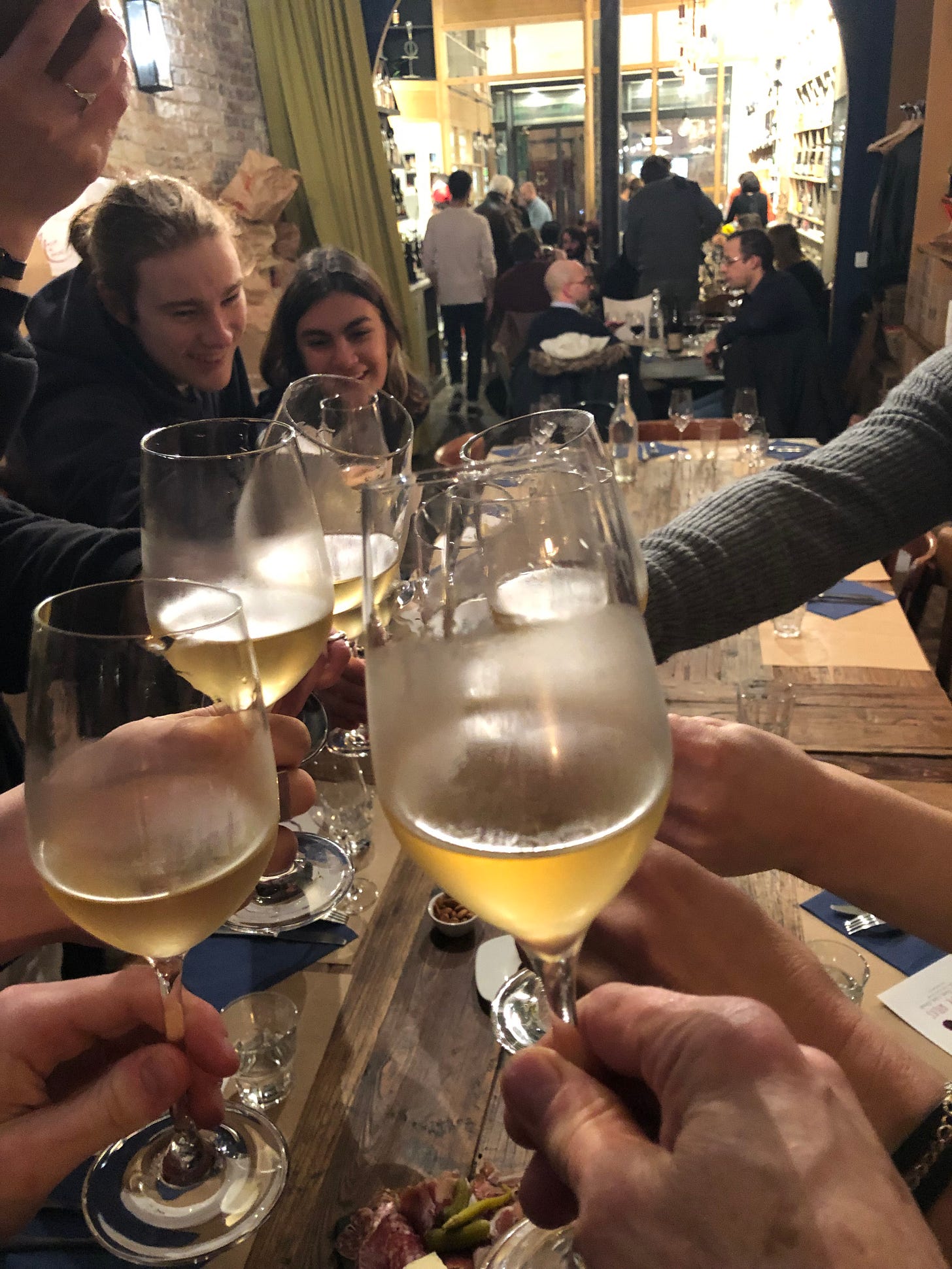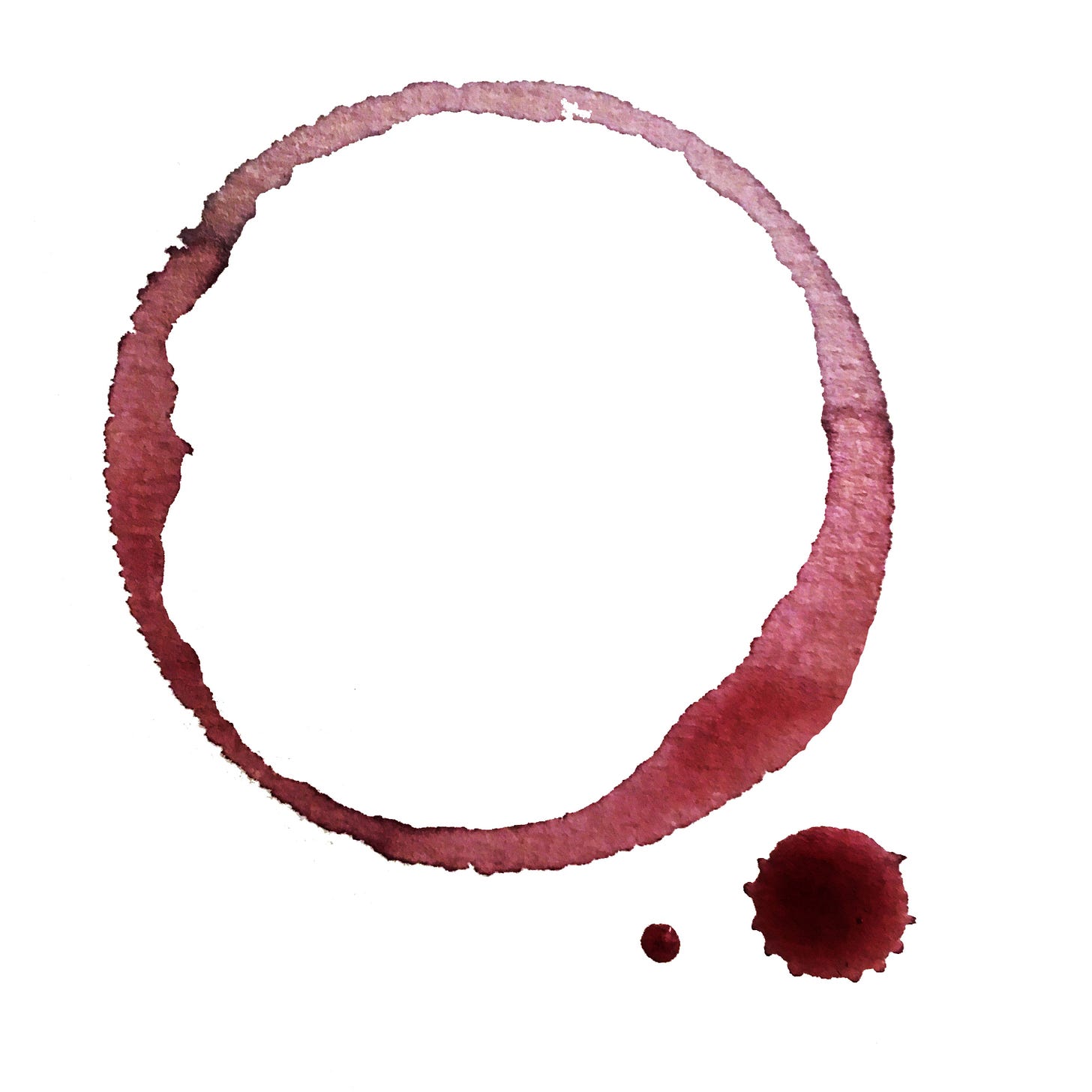Getting out of the city, even if it’s not very far out, and only for an afternoon, is always refreshing. There’s a sense of adventure in renting a car to set one’s sites on green grass and vines. The weather on Saturday 22 March (officially the day after the official beginning of Spring) was very ‘March’ - mad as a hatter, or in like a lion and out like a lamb (which remains to be seen).
The French refer to the often confusing and unpredictable weather of March as ‘les giboulées de mars’, where one moment it’s sunny and the next it’s pelting rain or hail, or swirling with snow. But just like Christopher Robin and Winnie the Pooh, we don’t much care what the weather is doing, as long as we’re out in it.
I did an earlier piece on Les Racines du Temple so won’t go through all the background again. But that was our destination, with pruning our objective. So, we were a bit surprised when we arrived to discover the pruning had already been done. Instead, there was a detailed introduction to pruning given by Christophe Fangeux (who along with Jean-Marc Fleury is at the origin of Les Racines du Temple), which was attentively heard by those present, including a small child who seemed to have understood everything well enough to know which branches should be cut and which kept. And there was a dog named Pax. We became instant friends upon meeting and so I was a bit distracted during the presentation on pruning as Pax wanted to chase sticks. Or rather sarments (the dead vine branches). She makes a brief appearance in the video below:
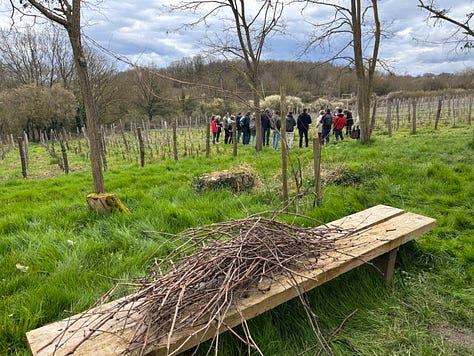
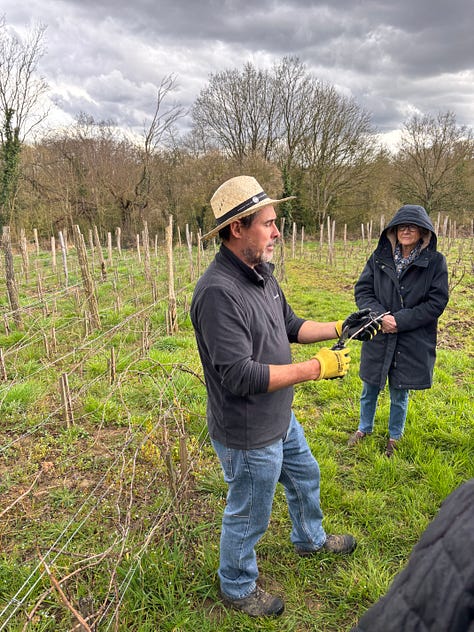
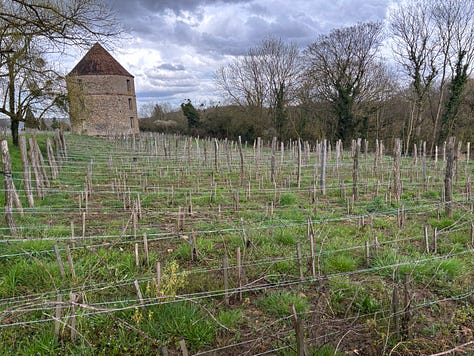

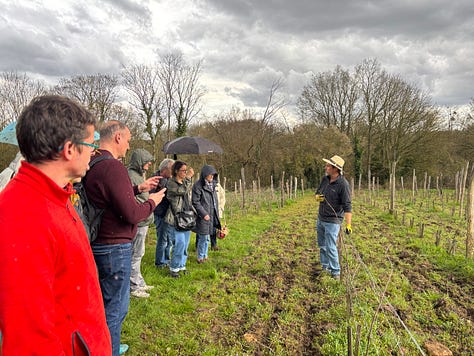
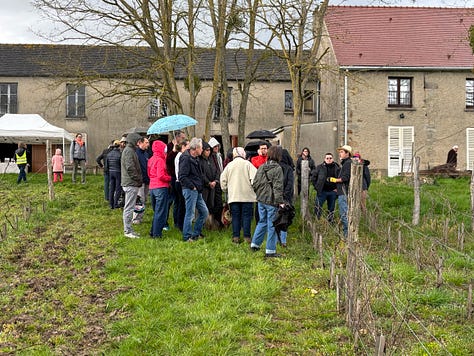
Pruning a grapevine is an ancient ritual, as old as viticulture itself. It’s a dance between nature’s wild exuberance and human intention, a careful trimming that reveals the essence of the vine. You could think of it as a form of conversation, where the vine speaks in growth and energy, and we respond with the subtle art of restraint.
The why of pruning is simple, yet profound: it encourages the vine to focus its energies on the most fruitful and productive branches. Left to its own devices, the vine might sprawl out wildly, producing an abundance of leaves and shoots, but few grapes of worth. By cutting away the old, the unnecessary, the weak, and the superfluous, we redirect the vine’s vitality toward the creation of fruit.
But is it good for the vine? To prune is not to harm, but to guide. The vine, in its wild state, may grow in every direction, its energy scattered like sunlight through a forest canopy. Pruning, though, serves as a kind of benevolent discipline. It’s the paradox of nature: in order to flourish, we must sometimes let go. The vine doesn’t know it, but by removing parts of it, we encourage it to grow with intention, to concentrate its efforts where they matter most.
In this process, the vine becomes more than just a plant; it becomes a reflection of life itself. We too must prune: our time, our distractions, our energies. Growth demands sacrifice, and it is through this act of gentle trimming that we, too, come closer to our truest selves. So, yes, pruning is good for the vine — but perhaps, in some way, it is good for us as well…
In addition to the pruning atelier, there were very delicious breads from a bakery in the Essonne and jams, herbal teas, and pesto made from carrot tops from the farm Les Jardins Edulis. Back in Paris (having avoided the highways for the byways) we had a pasta feast with the carrot-top pesto and wines from here and there. The happy result of the art of pruning.
To explore the vineyards of Paris and find again that spring in your step that the promise of renewed life brings, we invite you to join us on a wine walk, cultural tour, or treasure hunt. Tis the season to be out and about in the burgeoning green and the blossoming, flowering, budding perfume of nature’s infinite colour palette. Santé!
Thank you for letting me into your world and for reading the Paris Wine Walks Substack. Your support is invaluable as are your comments, suggestions, critiques, dreams, thoughts and remembrances. A little encouragement goes a long way, so please consider a paid subscription, which need cost no more than (a cheap) glass of wine per week. Or, book a wine walk!
My book, ‘The Hidden Vineyards of Paris’ (reviewed in Jancis Robinson’s wine blog, the Wine Economist, National Geographic Traveler UK, UK Telegraph) is available for purchase via our website and at anglophone bookshops and wine shops in Paris. You can also find it at the Musée de Montmartre and the Librairie Gourmande.
Wine Walks & Tastings!
Medieval & Roman Paris
Notre Dame, the Roman Baths, Hôtel Cluny, La Sorbonne, the Pantheon, the Roman Arena… history comes alive, conviviality shines, fun guaranteed, without the wine (or just one glass)
Clos Montmartre - Paris in Your Glass
Paris' most famous wine producing vineyard
Latin Quarter Unbottled!
An insider's journey to the oldest wine neighbourhood in the city
Wine Your Way Through the Marais
The Marais seen through a wineglass
Saint-Germain-des-Prés
Discover the vinous spirit of medieval Paris
3-Vineyard Cycling Tour
A comprehensive overview of medieval Paris by bike
Paris Bottled!
Short on time? This one’s for you
Drink responsibly, drink sustainably, in moderation
Paris Wine Walks is a reader-supported publication. To receive new posts and support my work, consider becoming a free or paid subscriber.

